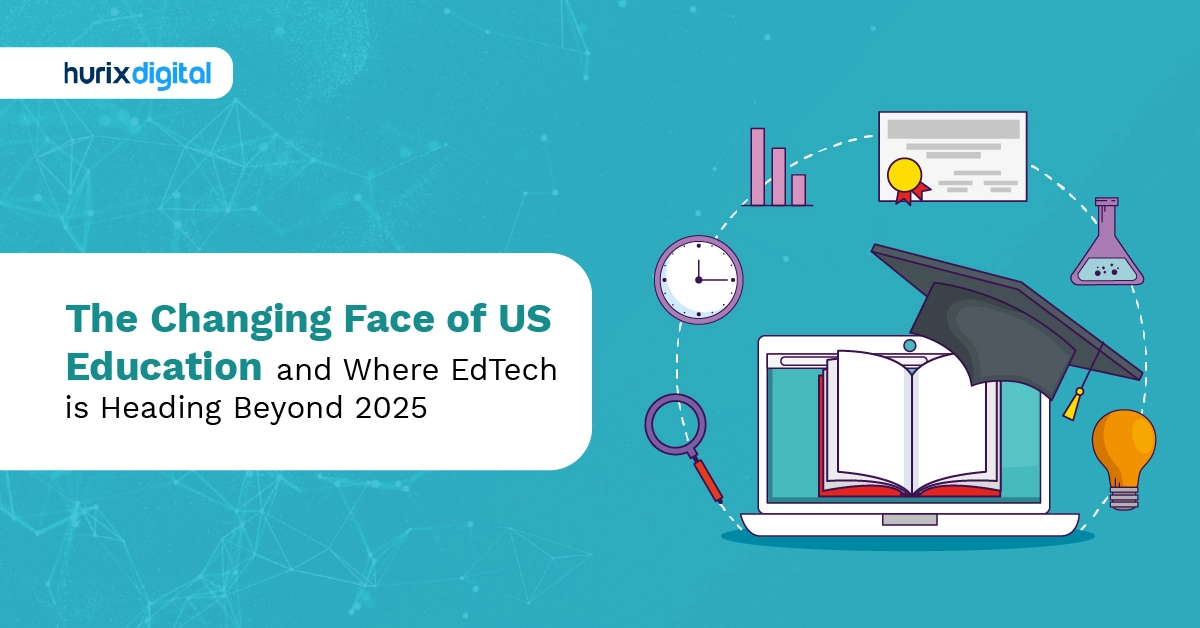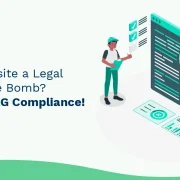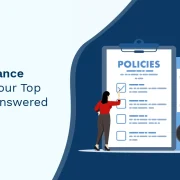
L&D Strategies to Build a Learning and Growth Culture
Behind every successful company, there is a team of contributing employees. If your workforce lacks the necessary skills, your business performance and profitability can become questionable.
As a result, leading organizations invest in the learning and development of their human resources. It keeps them competitive and helps them implement the latest trends and best practices. Best of all, organizations with a sound talent strategy are 4 or more times likely to achieve top business performance. So, developing and implementing fitting learning and development (L&D) strategies are in your business interest.
In this whitepaper, we will explore the top L&D strategies that foster a culture of learning and growth.
Table of Contents:
- What are L&D Strategies?
- How to Create L&D Strategies for Your Company?
- What are the Latest Learning and Development Trends?
- What are the Benefits of Having L&D Strategies?
- Final Thoughts
-
What are L&D Strategies?
An L&D strategy identifies the skills and capabilities employees need to fulfill business objectives. Additionally, it outlines how the organization can help teams acquire those skills to ensure organizational success.
These strategies allow businesses to meet changes in the labour market by creating a culture of learning. They align with the overall objectives of the organization and facilitate their achievement.
In addition, L&D strategies reflect other policies of the company like recruitment and human resources. An environment of learning and growth benefits both the business and its employees. The workforce becomes highly motivated and is ready to give their best.
Moreover, they are inspired to work for you as they can grow and expand their careers. As a result, L&D strategies are an integral part of any business strategy.
-
How to Create L&D Strategies for Your Company?
Businesses can use a range of strategies to empower their employees. However, you will need to focus on your needs to build a customized strategy that is geared for success. Of course, it is also important to establish the skills you want your teams to pick up. For that, you will have to assess each employee and identify their existing skills. Then you can plan a strategy to bridge those gaps.
Here are a few 5 proven approaches you may implement for your organization:
1. Start with a Top-Down Approach – Leaders and managers are the ones to guide employees. However, research shows many of the C-suite lack the necessary skills to drive a motivated team of employees. For example, 44% of HR professionals feel senior leaders don’t have effective skills. Or, surveys show that 50% of management candidates are not equipped with leadership skills. Moreover, 1 out of 8 candidates lack adequate planning skills.
Therefore, businesses should first focus on their leaders and managers. Find out if they are competent enough to motivate and inspire your employees. If not, identify the skills they lack and develop a training program to address the issue.
In addition, business leaders should be proficient in soft skills. However, that is not the case as 36% of businesses say their leaders can’t empower teams. Moreover, another 31% say their senior leaders don’t have enough empathy.
As a result, you should include the development of soft skills in your L&D strategy. Moreover, send your managers and leaders to conferences and workshops to make them more competent. They will also be able to guide and inspire the workforce better.
2. Make Continuous Learning a Priority – In the coming years, over 85 million jobs will experience displacement. In addition, there will be 97 million new jobs, as per the World Economic Forum (WEF). Needless to say, all these jobs will increase the demand for new skills and competencies. Therefore, employees will need to keep developing new skills to help achieve business objectives.
As a result, your priority should be to focus on the development of ongoing skills. It should be a gradual process spread across months and years for the best results. This approach doesn’t burden employees as they also have to fulfill their tasks. In addition, continuous learning is not stressful and allows for a better work-life balance.
3. Invest in Reskilling and Upskilling – Reskilling and upskilling are the secret to gaining and maintaining a competitive edge. Reskilling refers to acquiring new skills so that your employees can perform different tasks. For example, you may reskill your sales reps to handle marketing responsibilities. Moreover, reskilling may refer to acquiring a new skill set so that the employee can remain productive.
Upskilling means learning new skills to perform an existing task better. For example, a sales rep may learn to generate insights on a customer relationship management (CRM) solution to close deals better.
Both upskilling and reskilling are vital for the ongoing success of your business. As a result, 59% of L&D professionals prioritized reskilling and upskilling in 2021, according to LinkedIn. The focus is still ongoing, even if COVID-19 is slowly receding. You should also reskill and upskill your employees if you want to grow your business.
4. Make the Most of Shadowing – Most L&D strategies need significant investment for implementation. Whether it’s online learning or hiring a subject matter expert, you need money to help your employees grow. However, most organizations overlook a cost-effective way of training they have in their own company.
Known as shadowing, the technique allows your employees to learn from colleagues and leaders. They follow professionals of other teams or supervisors to learn new skills during a workday.
Generally, companies leverage shadowing to train new employees. They can pick up essential skills just by following another employee as they perform their duties. Therefore, this approach needs no extra preparation or budget. Your existing employees also act as teachers so that you don’t have to bring in a trainer.
Best of all, you can use shadowing for reskilling and upskilling your employees too. Additionally, it brings many benefits to the table, such as:
- Employees can share insights and personal experiences
- Builds connection between different teams
- Gives access to knowledge not otherwise available
- Employees learn about applicable standards in the workplace
Most importantly, shadowing goes a long way to foster long-term relationships between junior and senior employees. As a result, your office becomes a space for optimum collaboration that leads to innovation and growth.
5. Personalize Your Learning Journey – Personalization has become the best tool to please customers or users. Think of how delighted we feel when YouTube recommends us a track based on our listening history. Or, think of how marketers use personalization to deliver the right offers and boost their conversions.
Now, the same approach is making inroads in the education industry. Educators are advising enterprises to personalize any employee learning experience for the best learning outcomes. Therefore, you need to consider many factors, including how your employees want to learn.
Generally, any student today wants to learn at their own pace. They also need access to learning materials on-demand and even on the go. As a result, L&D professionals are taking advantage of the latest trends to facilitate learning.
What are the Latest Learning and Development Trends?
- Mobile learning: Mobiles are now a daily part of our lives. Most importantly, everything that was possible on a computer is now mostly possible from a mobile. As a result, make your learning available on smartphones for employees to access from anywhere. Additionally, you can also deliver assignments, quizzes, assessments, online lectures, and more on mobiles.
- Microlearning: Microlearning is an emerging trend that makes learning easily digestible. You can divide your learning program into small bites and deliver them to your employees. It makes learning fast and your course doesn’t overwhelm your workforce. As a result, they can grasp and retain information longer.
- Just-in-time learning: Just-in-time learning refers to on-demand learning. You don’t overload your staff with information or concepts through a standalone course. Rather, you deliver learning when it’s needed, right on time. For example, your sales rep learns information for a new product only when they are selling it.
What are the Benefits of Having L&D Strategies?
Modern enterprise learning relies on technology heavily. Whether it’s a learning management system (LMS) or custom software, employee learning leverages several technologies today. Additionally, you will need to utilize technology to implement the latest trends like personalized learning or microlearning. Best of all, you can use technology to make learning more interactive. Some of the best ways to engage your learners are simulations and gamification.
Simulations use virtual reality (VR) and augmented reality (AR) to create experiences similar to real life. For example, you can create a simulation of the equipment in your assembly line to train employees. They practice handling the equipment in a virtual world where making mistakes bring no consequences in real life. Therefore it is a great way to facilitate learning safely.
Gamification is making your employees learn by playing games. You can create a game out of everyday obstacles and challenges employees face in the office. For example, you can create a game where your employees have to successfully repair equipment to progress through a level.
Best of all, you can make gamification more immersive using a storyline and relatable characters. Businesses can rely on a range of interactive technologies and methods to make learning engaging. The process can even make your employees learn actively to improve learning outcomes.
Research also shows students perform better when they learn actively. However, they may not always realize this, which is also revealed by researchers. As a result, organizations may have to counsel employees a bit to understand the value of interactive learning. Fortunately, most of them will be convinced when they participate in simulations or gamification.
- Leverage Social Learning
Humans are social animals. Therefore, they are at their best when they are in a group of people. Moreover, working in a group is more motivating and leads to better results. Interestingly, the same applies to learning and developing skills. We learn better and gain deep knowledge when we do it collaboratively or with our peers.
As per LinkedIn, learning together boosts engagement by many times. Additionally, those who learn collaboratively view 30-times more hours of educational content compared to those who don’t
As a result, you should incorporate social learning in your L&D strategy. It improves the learning outcomes and also allows your team members to form a strong bond.
You may try several techniques to integrate social learning in your training like:
- Question and answer rounds
- Learning in a group
- Carrying out group assignments
- Post-lecture or class discussions and trivia
- Group brainstorming and knowledge sharing
Moreover, you can make your gamification and simulations collaborative. Your employees can participate as individual members and perform a task in a group. It is like a video game where a team of players competes against another team or the computer.
- Don’t Forget to Include Equity, Diversity, and Inclusiveness
A strong initiative to build a better and more inclusive workplace is visible all over the world. Workplaces are trying to weed out racism, gender inequality, and different forms of discrimination to promote equity. As a result, inclusiveness is among the main agenda in many business policies.
Now, you can use your L&D strategy to foster an equal and fair environment in your organization. Train and sensitive your employees on what’s right and incorporate it into your learning.
Additionally, account for any type of local discrimination, like hate against black in your program. The move can not only make all your employees feel inspired but also impact your reputation. Businesses that implement a diversity and inclusiveness program are 22% more likely to be perceived as a leading brand with top talent.
Moreover, they are 12% more likely to be viewed as an inclusive employer for people with different backgrounds, as per LinkedIn. Therefore, make diversity and inclusiveness a part of your L&D strategy for becoming an industry leader.
Final Thoughts
Learning and development should be a priority for every business. It is necessary to build a competent workforce and win the competition. You should focus on the skills your employees need to achieve your business objectives and work productively. Additionally, personalize your learning and take the help of technology to boost engagement. You should also encourage social learning and use interactive ways like simulations to encourage employee participation. Moreover, don’t miss out on training your managers and leaders so that they can guide and mentor your teams like an expert.
At Hurix, we believe a well-functioning learning culture is the most critical factor to success for business in this era of rapid transformation. To know more about solutions from Hurix Digital, please write to us at marketing@hurix.com or visit www.hurix.com.









